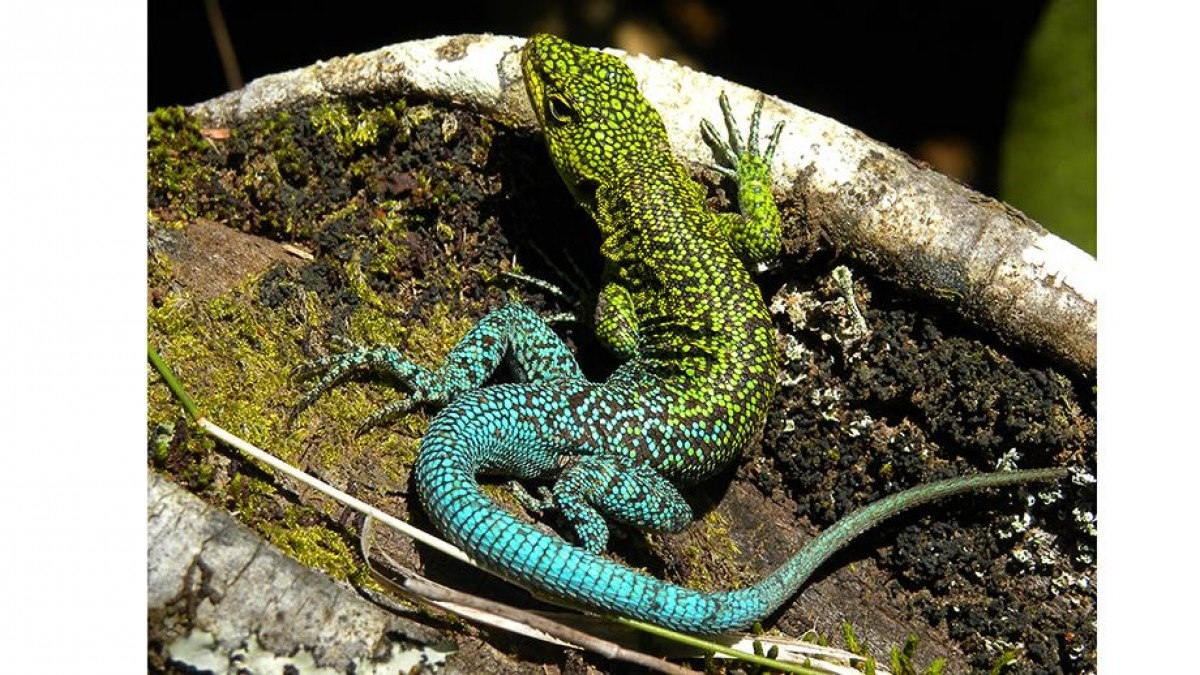Breaking a golden rule
A researcher has made a remarkable discovery about a group of lizards living in the Andes. Jess Fagan reports.
The discovery is not only ground-breaking – it’s controversial and challenges a fundamental rule of evolution.
Damien Esquerre, a PhD candidate at the ANU Research School of Biology, found egg-laying lizards that went to live on cold mountaintops in South America – where eggs do not incubate well – evolved to give birth to live young.
And here’s the remarkable part – when they moved back to warmer lowlands, they returned to laying eggs.
The turnaround is so rare it challenges one of biology’s most famous laws – Dollo’s Law of Irreversibility – formulated back in the 1890s. This law states that once a species loses a trait through evolution, it’s extremely unlikely to regain it.
“No mammal has ever re-evolved egg laying that we know of, but these lizards seem to – we found evidence of between three and eight reversals,” he says.
“This challenges Dollo’s Law. For example, species that adapt to living in caves and lose their eyesight as a result are extremely unlikely to get it back.”
While the switch by the Liolaemus makes sense from an evolutionary perspective – it’s beneficial for the lizards to lay eggs in warmer climates – Esquerre admits that exactly how the lizards re-evolved that egg-laying capability is still a bit of a mystery.
“We still need to understand more about the physiology of how the lizards transition between egg laying and live bearing,” he says. “They might be just at that threshold which makes it easier for them to transition between the two.
“We think evolving live-bearing multiple times allowed them to conquer mountain tops, but also allowed them to speciate more – or split and diversify.”
Having grown up in Chile, the Andes are familiar territory for Esquerre. He has spent years investigating how the South American mountain range – one of the world’s longest – has shaped the incredible diversity of the Liolaemus.
The quirky lizards are among the most diverse vertebrate groups on earth, with more than 260 different species.
“The Andes are really young in geological time scales, around 20 million years old, with uplift accelerating in the last 10 million years,” he says. “We found as the mountains lifted, the number of Liolaemus species diversified explosively.”
Mountains promote biodiversity in much the same way as islands in the ocean. In fact, scientists call mountain tops ‘sky islands’ to explain the phenomenon.
“Mountains account for less than a quarter of the Earth’s surface, but are biodiversity hot-spots, providing habitat for up to a third of terrestrial species,” Esquerre says.
“When two populations are separated – whether it’s by a mountain range or the ocean – given enough time they’re going to become two entirely different species.”
His findings open the door for further research into mountain ranges across the world, and how they generate biodiversity.
“The higher the mountains the greater the isolation they create,” he says.
“Other mountain ranges around the world, like the Himalayas and to a lesser extent even the Snowy Mountains here in Australia, should be looked at very seriously in terms of the impact they have.”
He says it could also be a starting point to explore how mountain tops impact biodiversity in other animal groups.
“Other animals that can adapt to cold climates and have low mobility, for example frogs, fish and insects, could show similar diversification patterns to the Liolaemus if they get trapped on cold mountain tops,” he says.
“I think this is a good starting point to explore in more detail how, for example, egg laying and live bearing evolve – in terms of physiology and genetic mechanisms, but also how mountain tops impact biodiversity elsewhere, and in other animal groups.”
This research profile was originally published in ANU Reporter.

